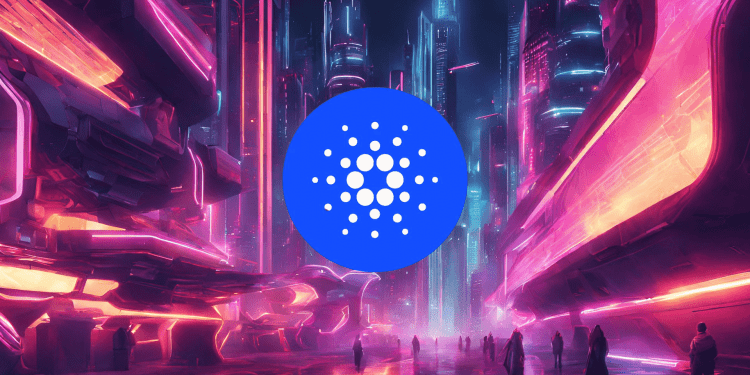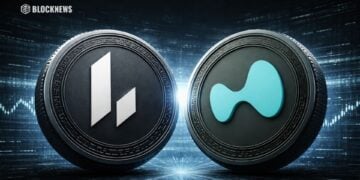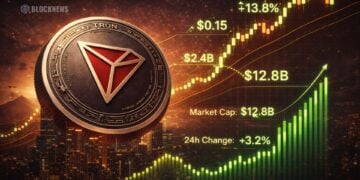- Cardano is an open-source blockchain platform created by Charles Hoskinson that addresses challenges like security and scalability through innovations like its proof-of-stake protocol Ouroboros.
- Cardano has a layered architecture with the Cardano settlement layer for transactions and the Goguen layer for smart contracts, using the Haskell language for modular design.
- Cardano’s native token is ADA, named for Ada Lovelace, with key roadmap updates like Voltaire, Basho, and Goguen on the horizon to enable governance, scaling, and smart contracts.
The Cardano blockchain has emerged as a dynamic ecosystem for decentralized applications (DApps), showcasing its prowess in DeFi, NFTs, and various token-based services. Under the leadership of co-founder Charles Hoskinson and the Input Output Hong Kong (IOHK) team, Cardano has witnessed substantial growth in 2023, setting the stage for an exciting 2024. So, let us explore the key aspects of Cardano, from its foundational principles to its native utility coin, and see what the future holds for this evolving blockchain.
Overview of Cardano
Established in 2015, Cardano functions as a modular Layer 1 blockchain employing the Ouroboros Proof of Stake (PoS) consensus mechanism. Its current processing capacity allows for up to 300 simple transactions per second and up to 15 smart contract transactions per second. Anticipated enhancements, particularly through novel scaling solutions, are poised to further accelerate its speed.
It is important to note that Ouroboros undergoes continuous updates, with the latest iteration being Ouroboros Hydra. Hydra is expected to elevate Cardano’s capabilities, not only in terms of transaction speed and capacity but also by enabling the development of DApps that operate on Cardano’s Computational Layer.
Cardano (ADA) Tokenoimics
ADA, Cardano’s native utility coin, ranks among the top 10 cryptocurrencies by market cap on CoinGecko. With a fixed maximum supply of 45 billion tokens and a circulating supply exceeding 35 billion, ADA plays a crucial role in the Cardano ecosystem. The tokenomics of ADA include an initial distribution as follows:
- 57.6% – ICO
- 11.5% – Team
- 30.9% – Staking Rewards
Photo Credit: CoinGecko
ADA serves multiple functions within the ecosystem, from facilitating transactions and governance to being an essential component of the staking process. Additionally, the Cardano treasury system allocates a portion of each block reward to fund ongoing development and maintenance, managed by the Cardano Foundation.
2023: Year-in-Review
- January:
- IOHK unveiled a toolkit for side-chain development
- Cardano experienced its first outage, though the issue was swiftly addressed
- Introduction of Cardano’s DJed stablecoin
- February:
- Valentine upgrade brought additional functionalities for DApp developers
- Cardano Foundation strengthened leadership with new COO and CLO appointments
- March:
- New CEO appointed for Midnight, a privacy-focused side chain
- Launch of the first Hydra head on the mainnet for technical advancement
- April:
- IOHK launched Lace, a light wallet and browser extension
- Cardano Foundation released a report revealing insights into its financial position
- May:
- Hiring another blockchain veteran for the Midnight side chain
- Introduction of Marlo smart contract developer toolkit
- June:
- ADA labeled as a security by the SEC in lawsuits against major exchanges
- This led to ADA being delisted by a few U.S. exchanges, which led to a temporary price drop
- July:
- August:
- Cardano Foundation launched a new Explorer with comprehensive information
- Significantly improved over the original Explorer, providing detailed account details and balance data
- September:
- Emurgo, a founding entity of Cardano, announced a substantial investment in Cardano’s ecosystem
- The investment aimed to address 21 identified areas of improvement
- Speculations included developments in decentralized digital ID and side-chain capabilities
- October:
- IOHK partnered with Minswap, a major DeFi protocol in the Cardano ecosystem
- The company launched Cardano Spot, a social media app for ADA enthusiasts
- IOHK acquired Nami Wallet, a popular browser extension in Cardano’s ecosystem
- November:
- Emurgo announced updates for Yoroi Wallet with a swap feature via Musliswap, a key Cardano DEX
- IOHK partnered with Bankxa to enable a fiat on-ramp for the Yoroi Wallet and enhance accessibility
- ADA experienced a significant price rally, bouncing back from earlier lows
- December:
- Introduction of Cardano Ballot, a governance dashboard
- The first official on-chain vote was conducted, highlighting community involvement in shaping Cardano’s future
Roadmap and What to Look for in 2024?
Cardano’s roadmap is based on a series of eras including:
- The Byron era concentrated on establishing the Cardano foundation
- The Shelley era aimed to decentralize Cardano
- The Goguen era ushered in smart contract functionality
- The Basho era (coming to an end) prioritized scalability
- The Voltaire era will focus on governance
In terms of its plans for 2024, the company is focused on delivering several major milestones. This includes:
The Chang hard fork:
The first step toward community-led governance through the implementation of CIP-1694. Chang hard fork plays a vital role in the strategic roadmap, intending to commence the bootstrapping period for the Cardano governance model. The change is said to incorporate workshops, conventions, and voting events, all of which will help Cardano achieve full community governance. This would mark the first step for Cardano as it transitions to the Voltaire era, as outlined in the CIP-1694 proposal.
Development of RWA:
Progressing the tokenization of real-world assets (RWA) on Cardano. The tokenization of real-world assets is recognized as a key area for propelling blockchain technology, providing businesses and creators with the means to monetize their property more efficiently and explore new revenue streams. This has the potential to play a significant role in streamlining the mainstream adoption of Cardano and its technology.
Cardano Spot:
Boosting the utilization of the app, which has amassed over 25,000 downloads. This social media platform caters to the Cardano community, serving as an all-in-one space to explore everything about Cardano and engage with the community. Its purpose is to unite the global Cardano community, fostering the exchange of ideas, resources, strategies, and experiences. It is meant to serve as a central hub for developers to create on the Cardano platform.
Yoroi Wallet:
Updating the Yoroi Wallet by incorporating innovative features and services. Developed by EMURGO, a partner of the Cardano Foundation, this lightweight wallet is accessible as both a browser extension and a mobile app. It aims to provide a smooth user experience, specifically catering to DeFi investors, while also facilitating the handling of Cardano NFTs and native tokens.
In addition to this, CoinBureau has speculated that considering Cardano’s collaborations with the Ethiopian government and the University of Zurich in the public sector, the company could potentially expand the application of blockchain technology to encompass wider governance and educational systems. Now, as reported by Emurgo there are over 1300 projects currently in development on Cardano. Thus, this opens up numerous possibilities for utility within the Cardano network.
Final Thoughts
In conclusion, as Cardano navigates the dynamic cryptocurrency market, it faces both challenges and opportunities. The adoption and demand for ADA hinges on the continued development of innovative solutions and the growth of its developer ecosystem. That being said, Cardano has incredible potential and if it can overcome the regulatory and adoption challenges, it could solidify its position as a leading blockchain.














